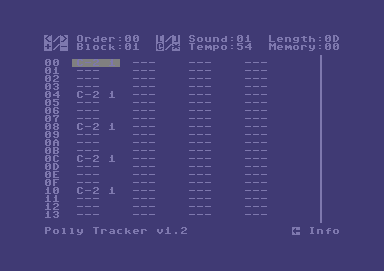The Holy Hubbard Code
 If you are one of those who doesn't know about the SID really, then you should have a deep look at this fantastic article explaining the assembler music routine of Rob Hubbard.. now you will know what really happens inside a SID chip. Have fun reading !
If you are one of those who doesn't know about the SID really, then you should have a deep look at this fantastic article explaining the assembler music routine of Rob Hubbard.. now you will know what really happens inside a SID chip. Have fun reading !Rob Hubbard's Music: Disassembled, Commented and Explained
by Anthony McSweeney from C=hacking issue 5.
How do you introduce someone like Rob Hubbard?? He came, he saw and he conquered the '64 world. In my estimation, this one man was resposible for selling more '64 software than any other single person. Hell! I think that Rob Hubbard was responsible for selling more COMMODORE 64's than any other person! I certainly bought my '64 after being blown away by the Monty on the Run music in December 1985. In the next few years, Rob would totally dominate the '64 music scene, releasing one hit after another. I will even say that some really terrible games sold well only on the strength of their brilliant Rob Hubbard music (eg. KnuckleBusters and W.A.R.).
So how did Rob achieve this success? Firstly (of course) he is a superb composer and musician, able to make the tunes that bring joy to our hearts everytime we hear them! (also consider the amazing diversity of styles of music that Rob composed).
Secondly, he was able to make music which was suited to the strengths and limitations of the SID chip. Just recall the soundfx used at the beginning of Thrust, or in the Delta in-game music. Perhaps the biggest limitation of SID must be the meagre 3 channels that can be used, but most Hubbard songs appear to have four, five or even more instruments going (just listen to the beginning of Phantoms of the Asteriods for example... that's only one channel used!!). I could really go on for (p)ages identifying the outstanding things that Rob Hubbard did, so I will finally mention that Rob's coding skills and his music routines were a major factor in his success.
The First Rob Hubbard Routine:
*****************************
Rob Hubbard created a superb music routine from the very first tune which was released (Confuzion). Furthermore, Rob used this routine to make music for a very long time, only changing it _slightly_ over time. The sourcecode that I present here was used (with slight modifications) in: Confuzion, Thing on a Spring, Monty on the Run, Action Biker, Crazy Comets, Commando, Hunter Patrol, Chrimera, The Last V8, Battle of Britain, Human Race, Zoids, Rasputin, Master of Magic, One Man & His Droid, Game Killer, Gerry the Germ, Geoff Capes Strongman Challenge, Phantoms of the Asteroids, Kentilla, Thrust, International Karate, Spellbound, Bump Set and Spike, Formula 1 Simulator, Video Poker, Warhawk or Proteus and many, many more! All you would need to do to play a different music is to change the music data at the bottom, and a few lines of the code....keep reading full article and detailed source code here...
//












